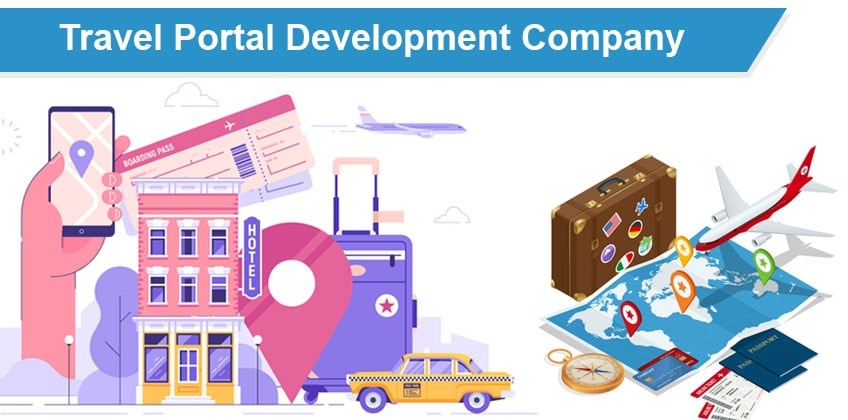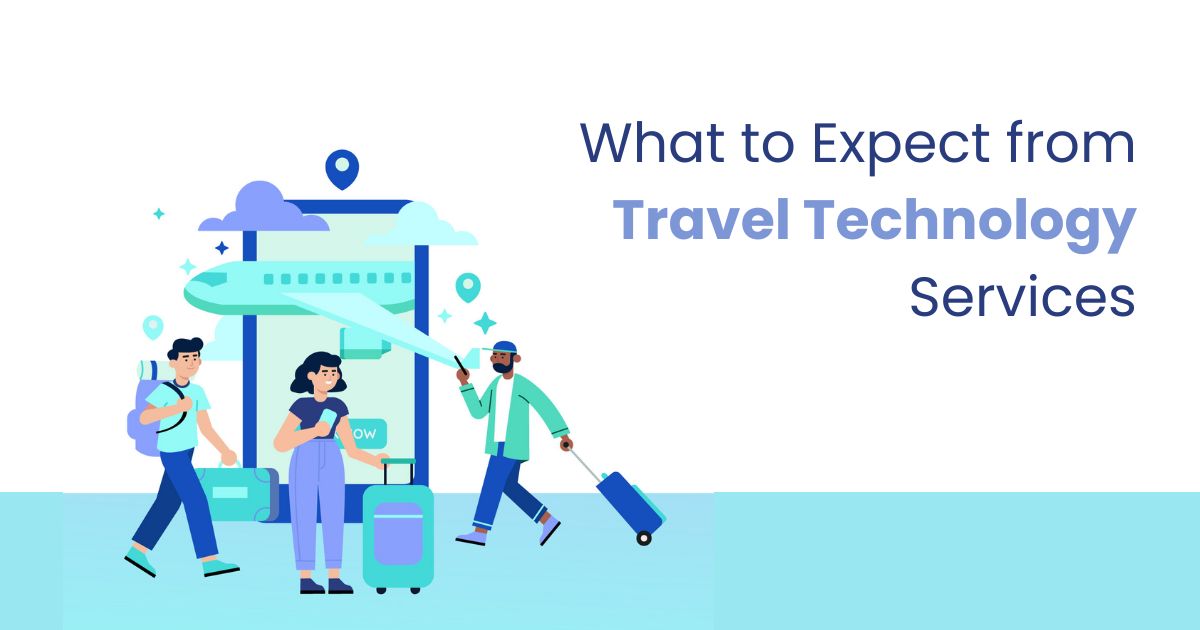The importance of travel portal development businesses cannot be overemphasized in the fast-paced world of travel, where the internet is king. When tourists book flights, hotels, rental cars, and excursions online, these firms are the masterminds behind the smooth customer experience. Every element of a travel portal is painstakingly created and planned to guarantee a seamless experience for consumers from beginning to end, from user-friendly interfaces to reliable backend systems. In this article, we explore the complexities of these businesses’ operations, the technologies they use, and the difficulties they encounter in providing smooth user experiences for tourists all around the world.
Travel Technology Solutions: Enhancing Your Travel Journey with Advanced Technology SolutionsUnderstanding the Role of Travel Portal Development Companies
Definition and Scope
Travel portal development companies specialize in creating web-based platforms that facilitate the booking of travel-related services. These services typically include flights, accommodations, car rentals, and activities. The scope of their work encompasses everything from website design and development to integration with third-party APIs (Application Programming Interfaces) for accessing inventory and processing transactions.
Importance in the Travel Industry
In today’s digital age, consumers increasingly turn to online platforms to plan and book their travel arrangements. Travel portal development companies play a crucial role in meeting this demand by providing intuitive, feature-rich websites and mobile apps that simplify the booking process. Their efforts contribute to enhanced user satisfaction and increased efficiency for travel businesses.
The Process of Crafting Seamless User Experiences
Research and Planning
Before embarking on the development of a travel portal, companies conduct thorough research to understand the needs and preferences of their target audience. This involves analyzing user behavior, studying industry trends, and identifying competitors’ strengths and weaknesses. Based on this information, they create a comprehensive plan outlining the features, design elements, and technologies that will shape the final product.
User-Centric Design
User experience (UX) design lies at the heart of every successful travel portal. Designers focus on creating interfaces that are intuitive, visually appealing, and accessible across different devices and screen sizes. They employ techniques such as wireframing, prototyping, and user testing to iterate on design concepts and ensure optimal usability.
Responsive Development
In today’s mobile-centric world, responsive web design is essential for delivering a seamless user experience. Development teams utilize HTML5, CSS3, and JavaScript frameworks to build websites that adapt fluidly to various devices and browsers. They also prioritize performance optimization to minimize page load times and enhance responsiveness.
Integration of Third-Party APIs
Travel portals rely heavily on integration with third-party APIs to access inventory from airlines, hotels, car rental companies, and other service providers. Development teams work closely with these providers to establish secure connections and retrieve real-time data on pricing, availability, and booking options. APIs also enable seamless payment processing and itinerary management within the portal.
Implementing Advanced Features
To differentiate themselves in a competitive market, travel portal development companies incorporate advanced features that enhance the user experience. These may include interactive maps, personalized recommendations, social sharing capabilities, and loyalty programs. By leveraging cutting-edge technologies such as artificial intelligence (AI) and machine learning, they can deliver tailored experiences that anticipate and fulfill users’ needs.
Quality Assurance and Testing
Before launching a travel portal, rigorous testing is conducted to identify and rectify any bugs or performance issues. Quality assurance teams perform functional testing, usability testing, and compatibility testing across different devices and browsers. They also conduct security audits to safeguard users’ personal and financial information against cyber threats.
Continuous Improvement and Optimization
The journey doesn’t end once a travel portal goes live. Development companies continuously monitor user feedback, analytics data, and market trends to identify areas for improvement. They regularly release updates and enhancements to address usability issues, add new features, and stay ahead of the competition. Through A/B testing and data-driven decision-making, they strive to optimize the portal’s performance and maximize user satisfaction.
Technologies and Tools Used in Travel Portal Development
Content Management Systems (CMS)
Many travel portals are built on popular CMS platforms such as WordPress, Drupal, or Joomla. These platforms provide a flexible and scalable foundation for managing content, user accounts, and e-commerce transactions. They also offer a wide range of plugins and extensions for extending functionality and integrating with third-party services.
Frontend Frameworks
Frameworks like React, Angular, and Vue.js are commonly used to build dynamic and interactive user interfaces for travel portals. They enable developers to create reusable components, manage state efficiently, and ensure a smooth browsing experience across different devices.
Backend Technologies
For the backend infrastructure of travel portals, developers often rely on server-side languages like PHP, Python, or Node.js. These languages power the logic and functionality behind the scenes, handling tasks such as user authentication, data processing, and API integration. Database technologies like MySQL, PostgreSQL, or MongoDB are used for storing and retrieving information efficiently.
Cloud Hosting and Deployment
Cloud computing platforms such as Amazon Web Services (AWS), Microsoft Azure, and Google Cloud Platform offer scalable and reliable hosting solutions for travel portals. Development teams leverage services like virtual machines, container orchestration, and content delivery networks (CDNs) to ensure high availability and performance. Continuous integration and deployment (CI/CD) pipelines streamline the process of deploying updates and changes to the portal.
Analytics and Monitoring Tools
To gain insights into user behavior and track the performance of their portals, development companies utilize analytics and monitoring tools. Google Analytics, Mixpanel, and Hotjar are popular choices for analyzing website traffic, user engagement, and conversion rates. Additionally, tools like New Relic and Datadog help monitor server performance, detect errors, and troubleshoot issues in real time.
Challenges Faced by Travel Portal Development Companies
Integration Complexity
One of the biggest challenges in travel portal development is integrating with a myriad of third-party systems and APIs. Each service provider may have different protocols, data formats, and authentication mechanisms, making seamless integration a complex endeavor. Development teams must navigate these challenges while ensuring data accuracy, security, and compliance with industry standards.
Data Security and Compliance
Travel portals handle sensitive information such as personal details, payment credentials, and travel itineraries, making them prime targets for cyber attacks. Development companies must implement robust security measures to protect against threats like data breaches, phishing attacks, and SQL injections. Compliance with regulations such as the Payment Card Industry Data Security Standard (PCI DSS) and the General Data Protection Regulation (GDPR) adds another layer of complexity to the development process.
Performance Optimization
In an age of instant gratification, users expect travel portals to load quickly and respond seamlessly to their interactions. Performance optimization is therefore paramount, especially for portals with large volumes of traffic and dynamic content. Development teams must employ techniques like caching, lazy loading, and content delivery networks (CDNs) to minimize latency and ensure a smooth browsing experience for users worldwide.
Scalability and Reliability
As the popularity of a travel portal grows, so do the demands on its infrastructure in terms of scalability and reliability. Development companies must design their systems to handle sudden spikes in traffic during peak booking periods without sacrificing performance or uptime. This often involves employing distributed architectures, load balancing techniques, and auto-scaling mechanisms to dynamically allocate resources based on demand.
User Experience Personalization
In an increasingly competitive market, personalization is key to attracting and retaining users. Travel portals must deliver tailored experiences that cater to the unique preferences and behaviors of individual travelers. Achieving this level of personalization requires sophisticated algorithms, data analysis techniques, and user profiling mechanisms. Development teams must strike a balance between privacy concerns and the desire to provide personalized recommendations and offers.
Conclusion
Behind every seamless user experience in the travel industry lies the meticulous craftsmanship of travel portal development companies. From research and planning to design, development, and optimization, these companies work tirelessly to create platforms that simplify the booking process, delight users, and drive business growth. Despite the myriad challenges they face, their dedication to innovation and excellence ensures that travelers can navigate the world with ease, one click at a time.










